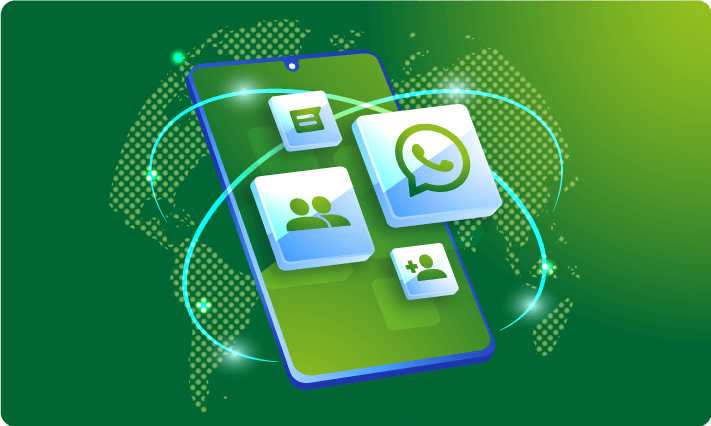WhatsApp is a popular smartphone messaging application. It is used by more than 1.5 billion people worldwide. WhatsApp has an API that allows developers to create applications that can interact with WhatsApp users.
An Application Programming Interface (API) is a set of routines, protocols, and tools for building software applications. An API allows your app to access certain elements of another application.
API WhatsApp is a feature that allows businesses to send and receive customer messages through the WhatsApp platform. This can be particularly useful for businesses with customer service departments because it saves them time and money by eliminating employees needing to handle incoming calls or emails.
With this new feature, businesses can now connect with their customers in real-time using text messaging on their phones or computers — no matter where they are in the world.
Features of the WhatsApp Business API
The WhatsApp Business API supports a wide array of features, including:
- Works with both iOS and Android.
- Supports voice and video calls.
- Supports group calls.
- Supports location and contact sharing (for both users and businesses).
- Supports payments (with options for free invoices or paid invoices).
- Webhooks can be used to provide custom bot functionality on the platform.
Benefits of WhatsApp Messenger for Businesses
It’s a convenient way to reach customers anytime, anywhere without having worries about being blocked by spam filters either because they won’t receive replies anymore after changing their number(s) regularly because there aren’t any rules against sending multiple messages at once right now; hence making them extremely resistant when it comes down time management issues such as trying to remember everything said yesterday morning when talking about these topics again later this afternoon.
How to Implement a WhatsApp AI Chatbot online
If you’re planning to develop a chatbot that can handle voice interactions and visual responses, it might be more challenging than those who work with text information.
The platform is designed to process three types of data: text, audio, and video. The first two can be used by any app, while the third one is only available for those using WhatsApp Business. The advantage of having access to visual information is that it allows you to create interactive experiences that are more engaging for your users.
Because a WhatsApp chatbot would be accessible to all your customers and require no app installation, it’s an effective and fast way for businesses to build brand awareness and interact with customers.
Unlike other forms of marketing, chatbots allow customers to easily access information about your products and services on their terms. They also enable you to maintain long-term conversations with your audience, which means you can build trust over time. This is why chatbots are so popular in the modern world: they’re accessible, easy-to-use tools that can help businesses reach out directly with relevant content at the right time.
Now that you’ve decided to create a chatbot, it’s time to figure out what the bot should accomplish. That’s right: define your goals.
Before you start coding or designing your chatbot online, you must ensure its purpose is clear. You’ll get more out of the process if it’s based on something concrete and real-world—a problem or an opportunity within your business.
Once defined, this goal will be used as a touchstone for everything else about the project: from defining success metrics (how much does it improve? how many people does it help?) to choosing features (what features would help achieve my desired outcome?).
Conclusion
This article covered all the important aspects of API WhatsApp. This article has helped you learn more about this tool and how it can help your business connect with customers better.
